Lately I’ve been receiving a bunch of e-mails, asking about how to write and self-publish a best-selling book. I’ve now published several books over the last 10 months, all of which have reached #1 spot during their launches, and so I wanted to share what I’ve learnt as a result.
I’ve also met and talked to the most successful authors who are earning thousands – even tens of thousands in royalties from Amazon, taken what I’ve learned from them with regarding launches and building a book-centered business, and added it to this procedure.
I’ve also interviewed best-selling authors on the podcast, and written several posts on self-publishing on this blog. Based on the popularity of a post I wrote last month, “Five Weeks, Five Best-Sellers” I’ve decided to include this accompanying article to help authors find even MORE success.
In fact, I recommend you read this article FIRST, followed by the other one.
Publishing on Amazon is a great way to earn a nice income remotely, build up a list, or boost your business. But you have to publish the RIGHT way if you want any results whatsoever… especially when it comes to the launch. So let’s start there.
1. How to Crush Your Launch and Ensure Long-Term Sales of Your Book
When it comes to Amazon, your launch is HUGE.
You need to plan a promotion for the week the book launches and drive as many downloads as possible, ideally to secure a #1 spot on the charts within your category.
Free Promotions

The first thing to realize is that Amazon has two best-seller lists in EVERY category: Paid and Free. That means, your book can become a “best-seller” just by giving it away during a FREE promotion.
Why would you do this? Well, the main reason you might do it is to build your e-mail list. There are a ton of huge newsletters for free books where you can easily promote your book during its free days.
I created a long resource of places where you can promote your free book launch. There’s also links to Facebook groups and Reddit free and e-book subs from where you can drive a lot of downloads during a free promotion.
Once someone downloads your book for free, you must include a really attractive offer immediately after the cover page to get more content from you. In my case, I offer a free download of my audio book in the title page:
![]()
Creating an audio book has two important benefits: as a free giveaway to build your list, and its also a great way to catch any typos or errors you missed. When I read my manuscript aloud to myself, I caught so many errors that I missed by scanning the content with my eyes. You can easily record an audio book of yourself reading your manuscript in Garageband and then upload to a file sharing network.
Amazon allows you to give your book away for free for five days, every ninety days. You absolutely should do this every ninety days – or as often as you like. It won’t make you money immediately – but it’s a great way to drive more readership to your work, and when these people join your mailing list, they can purchase future books, other products, and/or consulting from you.
You can also try some direct monetization strategies by offering immediate up-sells through platforms like Gumroad and Udemy, which I discuss in this companion piece.
Although Amazon allows you five days to do a free promotion, in my opinion the optimal time for a free giveaway is no more than three days. The first day of the free promotion you’ll see your biggest amount of downloads, then about 70-80% of that number on the second day, then about half of that on the third day. The downloads on days 4 and 5 are so negligible that isn’t worth it.
However – if you think doing free launches is enough, you are wrong! You need to make it into Amazon’s search engine as a PAID best-seller immediately after your book’s launch in order to get people to naturally “find” your book – and to ensure long term sales.
Paid Promotions
Getting into Amazon’s search engine – so that your book is viewed by millions of customers naturally browsing the site – is the holy grail of making money as an author.
I’ve talked with several top Amazon authors who are killing it right now to crack the algorithm. One author told me that you need to earn a lot of paid (99 cents) downloads within the first day or two. How many downloads you earn during the immediate launch is directly indicative of how much money the book will earn monthly.
However, another author told me that its most likely the first two weeks that your book is live that are most important (the guy is making over $14,000 per month from Kindle publishing, so safe to say he knows quite a bit about it).
On the other hand, I had breakfast with my friend Taylor Pearson, author of “The End of Jobs” and he told me that he did both a free promotion for a few days and then a 99 cent promotion.
I’ve been adjusting and re-form my launch schedule to optimize it for Amazon based on this feedback and my own experiences.
My strategy is to focus on a hybrid effort for the launch. Do a free promotion for the first three days that your book is live, and just flood the market. You’ll introduce a bunch of new people to your work and start building up your base of “1,000 True Fans” – people who love what you produce, start to follow you, and snatch up everything you do. Then run your 99 promotion and just dominate the rankings.
![]()
Here’s a working procedure of my ideal launch schedule:
Day 1: Publish the book.
Days 2-6: Get as many reviews as humanly possible. E-mail everyone you know. Ideally you gave out a bunch of copies to beta-readers a few weeks before publishing. Now’s the time to get in touch with them! This is also an ideal time to run your free promotion: ask people to download the book from Amazon for free, then write a review. It will be listed as a “Verified Purchase” review.
Days 7-9: get blasted out on 99 cent promo sites
Days 10-16ish: remain at 99 cents and get as many downloads as possible
Day 17ish: change to real price
![]()
At any rate, one thing is for sure: the easiest and most effective to drive a huge spike in paid sales is to do a 99 cent promotion with Buck Books.
There are a TON of newsletter promotion services out there, both for free and 99 cent Kindle promotions. Successful Amazon authors agree that Buck Books is the most legit. The service used to be free but it’s currently $32 to schedule a promotion with Buck Books – a fee well worth it as driving a huge sales spike in a short time frame is most important part to a successful launch.
Once Buck Books does your promo, keep your book at 99 cents for a week afterwards. If your copy is really great and you have some shining reviews, people will naturally discover the book and buy it. This signals to Amazon that the book is quality – and they want to promote quality books to their readers.
This is the best way to engineer your launch to ensure that your book performs well over a very long-term.
2. Get featured on a huge media outlet

Writing a book is a free access pass to publicity and a moderate amount of fame. It’s like your ticket to being let in, past the line of people waiting outside, to the VIP section of the hottest club in Vegas.
Milk this for all its worth. Use your book as a tool to open doors. Promote your book (and you) to all of the biggest blogs and podcasts related to your area of focus, and ask to do an interview together.Thanks to my books, I’ve gotten featured on over 40 podcasts (and done countless guest blog posts) to date.
If you want to learn how to easily find people to connect with and cold pitch them, I recommend checking out my book “Hack E-mail” as a comprehensive guide with tips and tactics that I can’t cover here due to space constraints.
On the other hand, one really big interview on the RIGHT channel can provide a huge boost for your book. After my friend Taylor Pearson published “The End of Jobs” one reader brought up the book to James Altucher, a NY Times Best-selling author and podcast host with millions of listeners. Shortly after the book launch, Altucher mentioned “The End of Jobs” on his podcast and interviewed Taylor the next week.
This exposure catapulted Taylor to top-ranked author overnight. This is a HUGE part of the game. If you can just get on one really big, highly-targeted podcast or radio show and give a killer interview, it can drive hundreds, perhaps thousands of sales and ensure a long-term high ranking within Amazon’s search engine.
Try to plan this so your interview goes live as close to your launch date as possible.
3. Cross-promote your other books / services / brand

This is really key. Someone who downloads one of your products is a prime prospect to want more from you!
I learnt about this strategy for the first time from the book “App Empire” by Chad Mureta. To succeed, he says, you really need to have both free products that you can use to flood the market and drive a bunch of downloads, and then convert many of those free downloads to paid orders.
It’s the best way to succeed in today’s “micro-transaction” market. Purchases for 2.99 are made with one-click, from someone’s phone, on an whim. Make sure you get a piece of the action!
There are numerous ways you can do this. You can mention (and link) to your other products or books within the text of a book. You can capture leads during your free promo and then promote other offerings. Or you can simply include a page in the front of each book with photos and links to your other books, along with praise.
If you’re not doing this you are leaving money on the table. Someone who reads one book spends a lot of time getting to know you, through your work. It’s very easy to encourage them to read your other books, or sign up for consulting, a webinar, etc.
4. Think of your title AS you write the book
This is a tricky one. Most authors will either have a name for a title BEFORE they write their manuscript, which influences the direction of the book. Or they simply put it off until after the manuscript is written, THEN try to come up with a title that they love for it.
That’s what I did I with my first book, and coming up with a great title after the fact was really tough.
The truth is, your book should evolve as you work on it. In the beginning, you only have a general direction for how you want to book to flow. Then new ideas come, new research is unveiled, and the manuscript changes to match.
Let it. And let the formulation of your book’s title run parallel to the evolving structure of the manuscript. Don’t put it off until then end because it forces your hand. Give yourself plenty of time to think about your perfect title, and there’s no better time to contemplate the title than while your deep in writing your manuscript.
5. How to Design a Killer Cover
I always get compliments on my covers. I don’t use Fiverr or outsource. I design the covers myself and usually only spend $10 and put them together in a single afternoon.
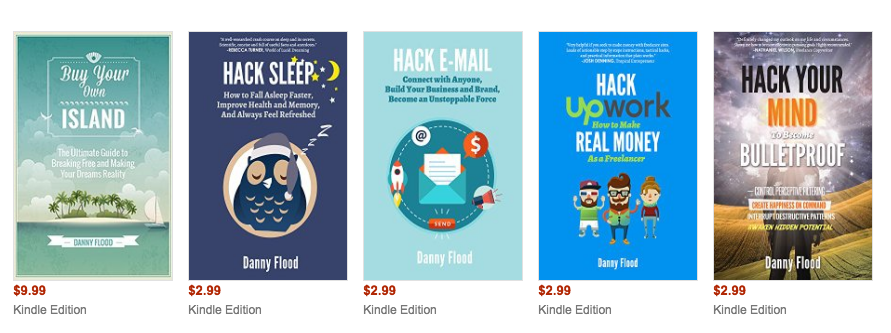
When I was in college I worked in a small book publishing shop to design covers for really niche books on topics like the metaphysical, religion, banned books, and so forth. I was paid $12 an hour, and usually took about 4 or 5 days to finish a book cover.
Now I can design my covers in just a few hours (I finished a redesign of my cover for my book “Hack Your Mind” during a short flight from Kuala Lumpur to Bangkok), and the quality is ten times better than the ones I used to make in college.
Shortcutting the creative brainstorming process is the first step. Here’s what I do: first, think about all of the keywords that are related to your book’s topic. So for example, I just wrote a book called “Hack Sleep” which is launching on 10/22. Coming up with an imagery was hard because I wanted to avoid any tropes.
In my notebook, I wrote down anything I could think of associated with sleep:
“Moon, night, darkness, bed, pillow, counting sheep, alarm clock, nightcap, teddy bear” and so on… exploring my mind for ideas that I might possibly be able to build on.
Once you have your list of keywords together, go to Shutterstock.com and search the images on there to see what kind of concepts professional authors and photographers have come up with on there. It’s really hard to do this exercise without finding something conceptual that you really love and that fits the theme of your book perfectly.
If possible, download the image and use it for your cover. Many of the images on Shutterstock are Vectors, which means you can edit the text and imagery in the file in Adobe Illustrator to customize them to your title.
Shutterstock requires you to sign up for a membership, so the prices of downloads can vary. But the reason I spend $10 is because I chose the 5 downloads for $50 option. It’s definitely worth it, and a great value for the quality of imagery. In my opinion, Shutterstock is the best stock photography site around.
The other option is to customize or create your own template with a prearranged layout, using Photoshop, for your covers. I have used the same sort of template for four of my book covers.
My cover template includes typography (unique fonts for your title and subtitle), an area for imagery in the center, a short endorsement at the top, my name at the bottom, and usually a unique background color.
6. Enlist Beta Readers and Get Reviews

Getting quality reviews from real people is a very important component of establishing that your book is legit.
I’m of the opinion that you shouldn’t underestimate other people’s intelligence. It is far too easy to game the system, and many authors do, by getting hundreds of fake 5-star reviews. However, this almost always results in a backlash, especially for lower quality books, where real readers will leave a 1-star review and assert that the positive ones are fake.
It is my gut feeling that one 1-star review is as powerful as 100 positive reviews as far as influencing a perspective buyer of your book. When someone is sizing up your book page, they really want to know whether your book is really going to deliver the goods. Nowadays any fool can publish a book, and many fools do, contributing to a sense of consumer mistrust and buyer’s remorse.
With that said, getting plenty of positive reviews is very important part of establishing that your book is the real deal and convincing prospective readers to buy.
So how do you do it?
The approach that I use is the simplest and easiest: offer to give out free copies to your friends and family a few weeks or a month before your book launches. You can post on social media, mail your list (if you have one), or just e-mail people you know. Ask them to become a beta-reader for your new book in exchange for a free copy.
These people become champions of your book who can help you in more ways then one. They can offer feedback which can be enormously valuable in order to get an early idea how your book will be received. They can catch errors that you’ve missed.
Once you’re book is live, you should follow up with every single one of them to let them know, and ask them to write a review for your book if they enjoyed it. And ask them to share it with their friends! It’s a great, free, effective “grassroots” way to introduce more people to your work.
You should be able to get at least a dozen positive reviews from real people using this method. For my latest book “Hack Sleep” I sent out about 200 free copies of the PDF, mostly to my e-mail newsletter subscribers, but I also put out a public offer on Facebook and get a dozen more beta readers that way.
To make it easier to send the book, upload your e-book to a service like Amazon S3 so that you can copy and paste a link where people can download, instead of attaching the file to every single e-mail. This way, you only have to upload the file one time, instead of 200 times.
7. Writing Your Book Description: the AIDA Formula
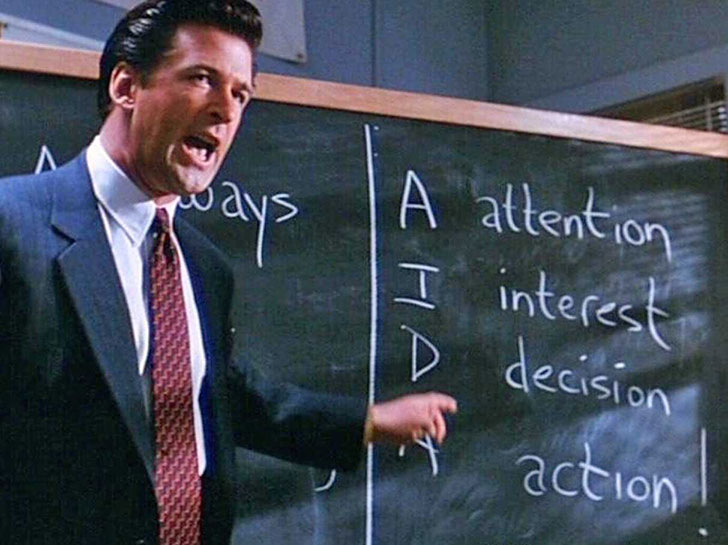
Most entrepreneurs who write books will write ones that offer the reader some sort of benefit, rather than write creative books such as fiction, poetry, or literature.
If your book is non-fiction, such as “How-to,” then there’s a simple copywriting formula you can use to write your book’s description, based on the “AIDA” (Attention, Interest, Desire, Action) formula used by Madison Avenue advertisers.
![]()
In a nutshell, here’s how to use this copywriting formula, insomuch as it applies to your book description:
Attention: focus on a very specific problem that book helps to solve.
Interest: pique their interest with your backstory, how you struggled with the problem, and how you solved it once and for all.
Desire: Dangle the benefits contained within your book in front of them (if you include the actual page number where each benefit is listed, its very powerful).
Action: Include a call to action to give people a nudge. Something like, “If you’re ready to join me on the other side, click on download.” (vague example but you get the idea)
![]()
This formula is straight-forward and easy to follow. Remember that your book description is your salesman, so you want it be watertight.
The trap that a lot of authors fall into (indeed, including myself), is that they become so eager to publish their book that when they go through the KDP menu to fill in their book’s information they quickly write their book description on the spot.
The description is not something you want to rush. It’s very important.
Finally, one more tip: be sure to talk directly to the individual reader, as you would in a one-on-one conversation. One technique I used to tell my clients in my advertising business is to record themselves when they give a spoken pitch to a customer. They would then transcribe that, and it formed the basis of their copywriting. Just because your description is online, you still want it to seem and feel like a real conversation between two people.
8. Create a version for Createspace
Createspace is Amazon’s website for print books. The market on here is not as huge as e-books because an e-book is an instant purchase and there are extra costs involved with printing and shipping books. It’s not nearly as easy to give away a print book for free, or to sell it for 99 cents when you have to pay the costs of printing and shipping.
With that said, there are still a lot of people who will want to order the print version of your book.
Depending on what your book is about, Createspace can also allow you to sell copies of your books in bulk. For instance, if you write a book about business, a company might ask for an order of 100 copies to offer to their clients. I had this happen to me with my book “Hack E-mail.”
9. Sell the foreign rights of your book

This is free money. If you have an awesome book that sells well, you can easily find an agent who can help you find someone to buy the foreign rights of your book. You give them the right to translate and sell your book in a country like Japan, or Brazil, in exchange for a paycheck.
My friend earned a cool $9,000 this way by selling the foreign rights to his book (through an agent) to a domestic publisher in South Korea. John Penberthy, author of “To Bee or Not to Bee” racked up $40,000 from foreign rights to his book, and shares how he did it:
“Knowing how tough it is for an unknown author to get published and knowing how difficult it is for an individual to nationally market a self-published book, I did everything bass ackwards and it has worked beautifully!
After self-publishing my book, To Bee or Not to Bee, a year and a half ago I got a website made www.ToBeeBook.comwhich included a 60 second trailer. Then I identified email addresses of over 100 foreign literary agents through internet research and sent them a brief descriptive email with the link to the trailer.
This piqued the interest of a dozen or so who requested a review copy. Several of them took me on and offers for translation rights from foreign publishers started coming–Korean, Italian, Spanish, Portuguese, Slovenian, Chinese and Romanian–with advances totaling nearly $40k. Several other languages are in the works. I strongly recommend using literary agents (as opposed to contacting publishers directly); they are worth their weight in gold.
With this track record I sent out 50 books to American literary agents, several of whom responded. I chose one and within 2 months had a contract with a nice advance from Sterling Publishing, a subsidiary of Barnes and Noble, for World English Rights. To Bee or Not to Bee will be re-released in hardcover in the U.S., Canada, U.K. and Australia this fall.
If you feel your book has universal appeal I recommend going this route.”
A few things to remember
So there you have it. While nailing your launch right is key, also remember that a book is a long-term asset. You can do free promotions every three months, flood the market, and introduce a lot of new people to your work. You can use your book as a sign of your authority on your topic and gain an edge over other companies, freelancers or consultants… and land a greater quantity and quality of clients. You can use your book, over and over again, to gain direct access to influencers and the media (even years after your book has been published).
Moreover, you can include your book in future promotions, in bundles, or do whatever you want with it. It’s a gift that keeps on giving value to you, the author.
Get out there and crush it! Feel free to write with any comments, or feedback, and tell me about your book. If you have leave a comment tor question I’ll check back in and reply.


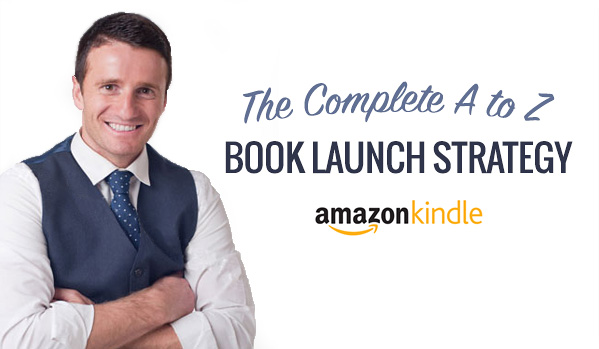
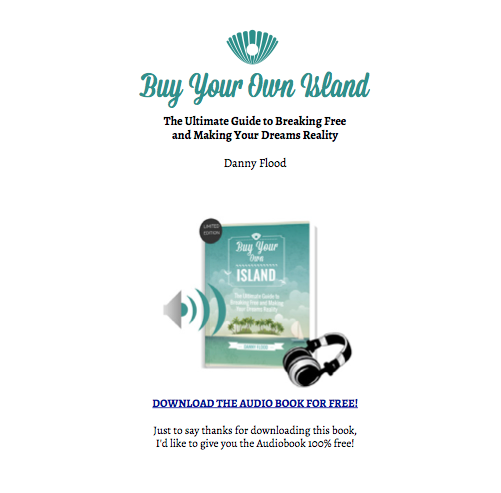
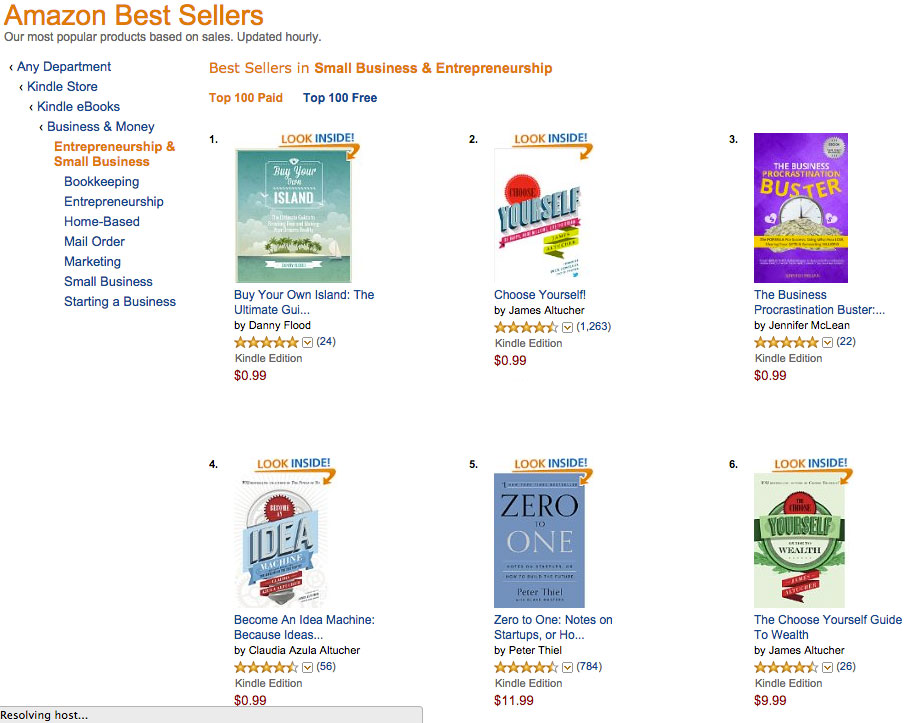
[…] Want to self-publish a bestselling book? Here’s everything I’ve learned so far after wri… […]
[…] Want to self-publish a bestselling book? Here’s everything I’ve learned so far after writing fiv… […]